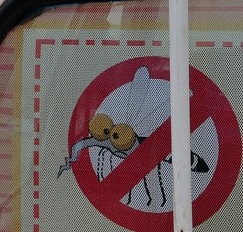Explainer: The Zika Virus in Latin America
Explainer: The Zika Virus in Latin America
Find out how governments are responding to an outbreak of this disease that may be responsible for serious birth defects and a rare paralysis condition.
Updated February 1—A mosquito-borne disease previously unseen in the Americas is now present in 20 Latin American and Caribbean countries and territories, prompting action from governments across the region and a travel advisory from the U.S. Centers for Disease Control and Prevention. While the disease only causes symptoms in 23 percent of those infected, scientists believe it may cause birth defects when pregnant women catch it and may be linked to a condition causing paralysis. Given that Brazil is experiencing more cases than anywhere else in the Americas, observers fear Brazil’s Carnival and the Rio Olympics this summer could lead to Zika outbreaks on a global level.
The World Health Organization said that the disease is “spreading explosively” and that the hemisphere could see 4 million cases this year. On February 1, the organization declared Zika a global health emergency.
What is the Zika virus?
First identified in monkeys in the 1940s in Uganda’s Zika Forest, the virus spread through the Aedes aegypti mosquito species to humans in subsequent decades, becoming common in Africa and Southeast Asia. Related to dengue, yellow fever, and the West Nile virus, the disease causes mild effects like fever, red eyes, rash, and joint pain, though only one in five people infected develop symptoms. There is no vaccine or known cure.
While rarely fatal, the disease may cause microcephaly—marked by smaller head and brain sizes and subsequent developmental delays—in babies born to infected mothers. The virus may also be connected to Guillain-Barré syndrome, which causes paralysis. Doctors identified a possible link after a rise in cases following a Zika outbreak in Brazil and El Salvador.
How did the virus reach the Americas?
Before 2014, the disease hadn’t appeared in the Western Hemisphere. But that year, doctors found a case on Chile’s Easter Island. Then in 2015, Brazil experienced an outbreak of the disease, which scientists believe may have touched down during the 2014 World Cup.
The disease first emerged in May, and by October medical professionals saw a jump in cases of microcephaly. They made the connection between Zika and microcephaly, which can be also caused by other factors including alcohol and rubella. Through the end of 2015, an estimated 1.5 million people in Brazil contracted the disease, while doctors found close to 4,000 suspected cases of microcephaly from late October through mid-January—a more than 2,400 percent increase from the usual 150 cases per year. Brazil also identified a possible connection with Guillain-Barré syndrome after doctors diagnosed close to 300 cases of the rare condition in northern states last year.
Is there a cure?
Not yet. The U.S.-based National Institute of Allergy and Infectious Diseases started work on creating a vaccine, and the Brazilian government is in talks to develop a vaccine with researchers at home and in Senegal.
Which countries are affected?
Locally transmitted cases have been reported in at least 23 countries and territories in the Americas, including Barbados, Bolivia, Brazil, Colombia, Dominican Republic, Ecuador, El Salvador, French Guiana, Guadeloupe, Guatemala, Guyana, Haiti, Honduras, Martinique, Mexico, Nicaragua, Panama, Puerto Rico, Paraguay, Saint Martin, Suriname, the U.S. Virgin Islands, and Venezuela. The United States saw a number of cases, including a mother who gave birth to a baby with microcephaly, but patients had contracted the disease traveling abroad and, as of the time of this report, there had not yet been reported cases of local transmission.
The World Health Organization cautioned this week that, given the widespread presence of the Aedes mosquito, the disease could spread to every country in the Americas except Canada and Chile.
|
|
How are governments responding?
Zika isn’t the only mosquito-borne disease in Latin America; the region is also experiencing outbreaks of dengue and chikungunya, meaning governments must find ways to tackle mosquitoes.
In November, Brazil declared a state of emergency on microcephaly, and in December began deploying the military to fight the spread of the Aedes aegypti mosquito, which carries Zika, dengue, and chikungunya. President Dilma Rousseff “declared war” on the mosquito and said she’d deploy an additional 220,000 troops to fight the insect and spread information on how to prevent the virus. The government will distribute insect repellent to roughly 400,000 pregnant women who receive cash-transfer payments via the Bolsa Familia program.
In February, Brazil's health ministry will begin distributing a test that allows medical professionals to simultaneously test for Zika, dengue, and chikungunya. In the state of São Paulo, scientists are also experimenting with genetically modified mosquitoes to fight the three diseases. The all-male mosquitoes cannot bite, and their offspring die, helping to reduce the population of disease-carrying insects.
Brazil is also planning preventative measures during Carnival and the Olympics, including public awareness campaigns, fumigation, monitoring of mosquito hotbeds, and inspections of facilities like the Sambadrome and stadiums.
On January 29, the Dominican Republic started a national operation, beginning in the capital, against Zika to eliminate mosquito breeding grounds and to carry out fumigation.
Last month, Colombia's health ministry launched a national awareness campaign about the disease. Health officials reported more than 20,000 confirmed Zika cases so far. The government—which forecasts that up to 700,000 people could get infected—has urged women to avoid getting pregnant for the next six to eight months to avoid contracting the disease. About 2,100 Zika patients are pregnant, and 12 cases of those infected show symptoms of Guillain-Barre syndrome. Doctors report a spike in diagnoses of the syndrome, with hundreds of cases as of this week. In May 2015, the city of Medellin began experimenting with bacteria-carrying mosquitoes to reduce dengue transmission. Ecuador is also increasing efforts to raise awareness about mosquito-borne illness transmission.
In Venezuela, the health minister said on January 29 that there are 4,500 suspected Zika cases in the country and 90 cases of Guillain-Barré, though she said there were no known cases of microcephaly. She said the government would make a “national offensive” against the disease-carrying mosquito. However, the government has been tight-lipped on Zika and, in contrast to other Latin American countries, was late to publicly discuss the outbreak. The health ministry hasn’t divulged a monthly report on communicable diseases since 2014. The Venezuelan Society for Public Health believes that more than 400,000 Venezuelans contracted Zika since July.
In December 2015, Mexico approved the world’s first-ever dengue vaccine, and is planning an awareness campaign around Zika. Only a handful of Zika cases have been reported in two states, but officials worry the disease will spread.
With around 6,000 suspected cases of Zika reported cases in El Salvador, the government is fumigating areas where the disease is concentrated. Along with launching a public awareness campaign, health officials cautioned women to avoid getting pregnant before 2018 to prevent against microcephaly. Doctors in the Central American country are also investigating a link between Zika and Guillain-Barré syndrome, since they detected close to 50 cases of the latter condition causing paralysis. Guatemala also created its own awareness campaign and began spraying in December. This month, the government of Honduras announced it would invest $11.1 million to combat Zika, dengue, and chikungunya, and raise awareness about preventing these diseases. Last year, 120,000 Hondurans fell ill from these three diseases.
Paraguay issued an epidemiological alert last week, given 60,000 possible cases of the three mosquito-borne illnesses in the country. The country's health minister warned that Zika, dengue, and chikungunya represent a “time bomb.”
And even though Jamaica has no recorded cases yet, the health minister advised this week that women should avoid getting pregnant in the next six to 12 months because of the Zika risk. Similarly, though the country hasn’t seen any transmissions, Peru fumigated the country’s largest cemetery—where water tends to gather around headstones and flowers, creating mosquito breeding grounds—last week to prevent against Zika.
In the United States, the Centers for Disease Control and Prevention issued a travel advisory on January 15, urging expectant mothers to consider avoiding travel to more than a dozen countries and territories in Latin America and the Caribbean, including Brazil, Colombia, Mexico, and Puerto Rico. It expanded the advisory to another six Latin American and Caribbean countries on January 22.
In reaction to the warning, Brazil Health Minister Marcelo Castro said he believed pregnant women can still safely travel by taking precautions against mosquito bites. But scientists predict Zika will spread globally, and one researcher told The New York Times the 2016 Rio Olympics could become a catalyst—especially since Zika may have been brought to Brazil during the World Cup. Experts also believe Brazil’s Carnival could be an “explosive cocktail” to spread Zika, given the number of foreigners and revelers in close contact, reports BBC Brasil.








